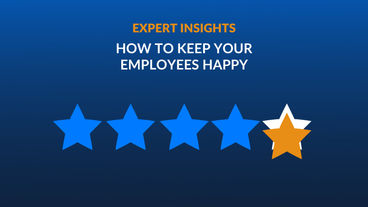.png)
Support Neurodiversity in the Workplace Through Improved Communication
Posted on 05/25/23 By Guest Contributor
Did you know that new neurodivergent hires are sometimes more productive than employees who've been in the same position for years? The reason is simple. Most of these individuals have unique strengths, including the extraordinary ability to hyperfocus on tasks and rapidly process visual information.
But neurodivergent workers often face numerous challenges, including difficulties with literal interpretations and reading non-verbal cues. To create an inclusive workplace that welcomes neurodiversity, organizations must prioritize effective communication and improved inclusion strategies. By doing so, they can tap into the incredible potential of neurodivergent individuals.
What is Neurodivergent?
Neurodivergent refers to people with mental functions that differ from what most people consider typical. The differences in neurodivergent individuals affect how their brains interpret information, behavior, and learning processes.
Several conditions are common in the neurodivergent population, including autism spectrum disorder, Tourette syndrome, attention deficit hyperactive disorder (ADHD), and Down syndrome.
The Benefits of Neurodiversity in the Workplace
Encouraging neurodiversity in the workplace comes with the following perks:
- Neurodivergent employees with neurological conditions like dyslexia and autism often possess extraordinary skills in areas like complex mathematics and pattern recognition.
- Since the brains of neurodivergent persons work differently, they often bring unique perspectives and problem-solving abilities to the table.
- With neurodiversity comes unique ideas, which facilitate improved creativity and innovation.
- Employing a neurodiverse workplace helps an organization serve its customers better because, according to experts, neurodivergent people are often drawn to each.
All these can give your organization the competitive edge needed to outperform competitors and build a formidable reputation.
Ways to Build a More Neurodivergent-Inclusive Workplace
The first step to building a neurodiverse-friendly workplace involves the hiring process. For your organization to attract neurodivergent people, its hiring process must have no barriers, prioritize inclusion, and utilize strategies to be more diversity-friendly.
Also, providing the right accommodations can help you encourage neurodiversity in the workplace. While doing this, remember neurodivergent people often have different needs. For instance, hyper-auditory individuals are more comfortable in quiet spaces, so building offices with soundproof walls or availing noise-canceling headphones may be necessary. On the other hand, you may need to substitute fluorescent lighting in rooms dedicated to neurodivergent employees with light sensitivity.
Finally, you can use communication to support neurodiversity in your organization.
Things You Can Do to Aid Communication and Support Neurodiversity
The following communication tips will help you promote effective communication.
· Provide Clear, Unambiguous Details
To avoid misunderstandings, be as clear and straightforward as possible while communicating. Avoid vagueness, sarcasm, or euphemisms because they may alter your message or confuse your audience. Also, address your recipients directly and begin with their names whenever possible.
· Always Ask, Never Assume
Communicating with a neurodivergent worker can be different from chatting with other employees. For instance, a neurotypical individual is likelier to sit back and listen during a conversation, but a neurodivergent may refuse to make eye contact or fidget constantly. But you shouldn't assume that the concerned individual isn't paying attention. On the contrary, if you have doubts, ask questions without judgment.
· Deliver Information in Digestible Bits
Neurodivergent workers, like those with dyslexia, may be susceptible to information overload. If you give them too much to digest at once, they may become extremely overwhelmed or even suffer anxiety attacks. That is why you should break down communication into bitesize chunks. Try adding a pause to give your co-worker time to process.
· Written Communication
Each person’s preferred method of communication is unique. A neurodivergent worker may prefer written communication. When possible, instead of face-to-face or phone calls, try to use email, instant messaging, or texting. Written communication is easier to refer back to and can allow more time to process information and structure a response.
· Conduct Regular Reviews
Surveys and assessments can help you measure whether your communication with employees is effective. Talk to them and encourage feedback. Also, encourage workers to speak up whenever something is against their liking and suggest actionable solutions.
Learn More
Recognize, support, and celebrate the different ways employees think, communicate, and process information. Discover new strategies to promote diversity and inclusion and learn ways to improve your team’s communication with Lorman. Contact us today for more information.
Related Articles
The evolution of marijuana legality and acceptance in the United States is changing rapidly, leaving human resources professionals concerned about corporate policies that prohibit the use of marijuana in and out of work.
These are 5 recruitment strategies to help find quality candidates for those hard to fill positions.
How can you make sure your employees are happy? We asked 9 human resources experts how they keep their employees happy and what they do to measure happiness in the workplace.


